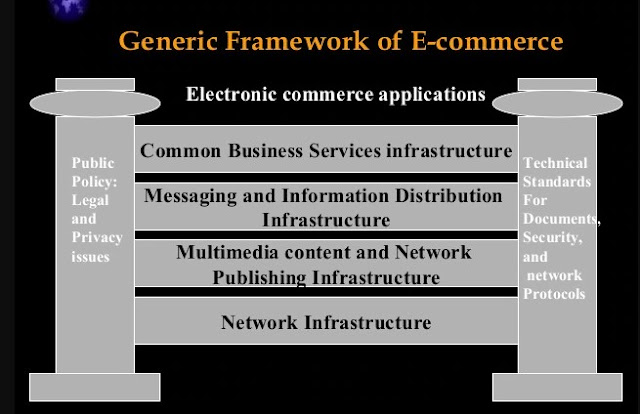Description of Electronic Commerce Framework/Generic Framework of E-commerce.
Electronic Commerce Framework
- E-Commerce applications will be built on the existing technology infrastructure
- A myriad of computers Communication networks Communication software
- Common business services for facilitating the buying and selling process
- Messaging & information distribution as a means of sending and retrieving information
- Multimedia content & network publishing, for creating a product & a means to communicate about it
- The information superhighway- the very foundation-for providing the highway system along which all e-commerce must travel
- The two pillars supporting all e-commerce applications & infrastructure
- Any successful e-commerce will require the I-way infrastructure in the same way that regular commerce needs
- I-way will be a mesh of interconnected data highways of many forms: Telephone, wires, cable TV wire, and Radio-based wireless-cellular & satellite
- Movies=video + audio
- Digital games=music + video + software
- Electronic books=text + data + graphics + music + photographs + video
- In the electronic ‘highway system’ multimedia content is stored in the form of electronic documents
- These are often digitized
- On the I-way messaging software fulfills the role, in any no. of forms: e-mail, EDI, or point-to-point file transfers
- Encryption & authentication methods to ensure security
- Electronic payment schemes developed to handle complex transactions
- These logistics issues are difficult in long-established transportation




Comments
Post a Comment